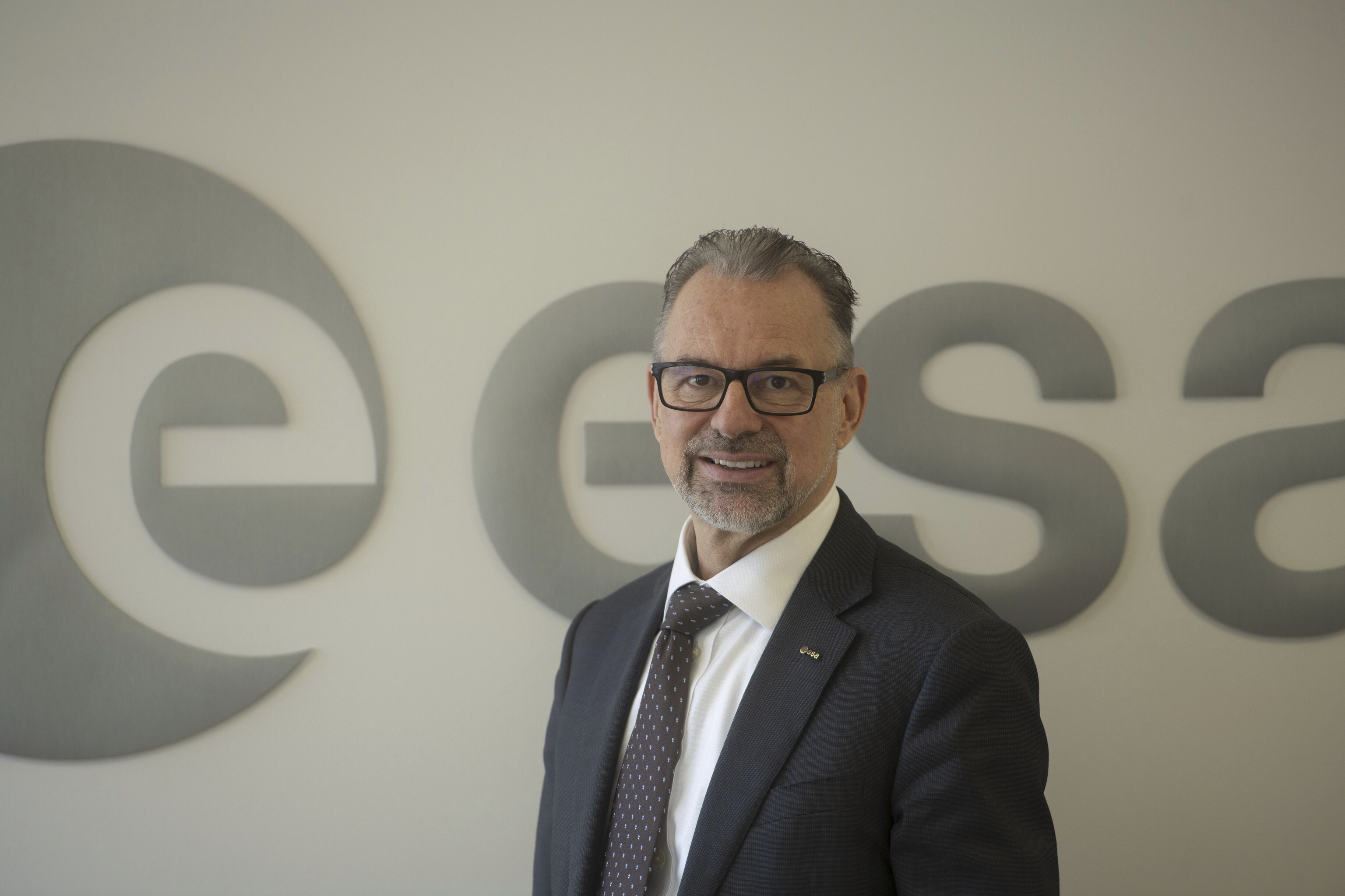The European Space Agency (ESA) has reached its 50th anniversary in 2025. Fifty years during which space technology has advanced, making us highly dependent on it: from communication and Earth observation satellites to navigation systems, and spacecraft exploring the cosmos. The anniversary comes at a time when the first crewed missions to the Moon since the Apollo era are being prepared, an exciting period but also one of uncertainty due to the shifts in the U.S. space program under the administration of Donald Trump, and the budget cuts proposed for NASA.
Dealing with all this is Josef Aschbacher (Ellmau, 1962), the Austrian scientist who has been leading the European Space Agency since 2021, which includes 23 countries, including Spain. Trained in Natural Sciences, Aschbacher oversees an annual budget of 7.7 billion euros and a workforce of 5,500 employees spread across various centers that he has come to know well over the more than three decades he has been associated with the agency.
When he took office as Director General of the ESA in 2021, he published a new space strategy called Agenda 2025. "Some of my predecessors presented a document to explain to the Member States and the community what their priorities were. I did the same. It was, if I may say so, my document to make my priorities clear and how we would move forward in the ESA in the following years," he explains in a video call interview regarding the publication of the ESA's 2040 Strategy, coinciding with the start of his second term, which will extend until 2029.
"I chose 2040 as a realistic deadline, far enough to have a long-term vision, but close enough to see results. The second difference from Agenda 2025 is that this is not just my document, but a document developed with the Member States. And I believe that this makes it much more solid, more powerful, and much better as a strategic guideline," summarizes the ESA's top official.
Protecting our planet and climate, exploration, strengthening the continent's autonomy and resilience, boosting growth and competitiveness, and inspiring Europe are the pillars of this roadmap, which, as described, "provides a long-term vision of where we are heading and how we will get there." Within it, he explains, there are some elements that began in the last four years, such as commercialization and security. "Undoubtedly, maintaining a strong and effective relationship with the EU remains a priority on which I have placed great emphasis. Other activities will continue to be key, such as climate change and Earth observation, a field in which we are global leaders as we have the largest terrestrial observation program," he boasts.
This week, the ESA announced that PLD Space, the Spanish company developing the Miura rockets, has been shortlisted among the top five in the European Launcher Challenge, a competition to promote Europe's sovereignty in space access by encouraging its companies to develop their own rockets. The final selection will be announced at the ESA Ministerial Conference to be held in November in Bremen, Germany.
Regarding the large rockets, Ariane 6 will not be replaced by an Ariane 7: "The plan is to replace it with one rocket, or preferably two, because we would like to have competition and have two companies in Europe from which we can purchase to ensure that we obtain the launch capacity we need. We will rely on them, but of course, we need to be sure that we will have access to those services for decades. We are aware that any commercial company can change industries, go bankrupt, or be acquired by a non-European company, so there would need to be guarantees," he points out. "Above all, I would like to help create strong companies in Europe that are capable of developing and offering their launchers," he emphasizes.
Aschbacher hopes and believes that the companies from which the ESA will purchase their launch services will develop reusable rockets like SpaceX's successful Falcon: "At the ESA, we have created technologies that allow it, such as the reusable Prometheus rocket. The idea of the Ariane group is to sell it to anyone who wants to buy it, similar to what the manufacturer Safran does, developing aircraft engines for different clients and different aircraft, both in the U.S. and Europe. And we will continue to invest in a larger engine, necessary to launch heavier payloads into orbit or to go to the Moon and Mars. We will invest in technological development, but we hope that companies will also do it on their own."
The interview took place on July 3, precisely when the U.S. Congress was debating and approving the so-called Big Beautiful Bill, the tax law. Contrary to the intentions of Elon Musk and Donald Trump, this law included funding for two chapters of Artemis, the program to send humans back to the Moon: the future lunar Gateway space station, to which the ESA will contribute significantly and which has been under the threat of cancellation for months, and the support for launching Artemis 4 and 5 missions with the U.S. SLS rocket, which Musk wanted to replace with his Starship rocket.
